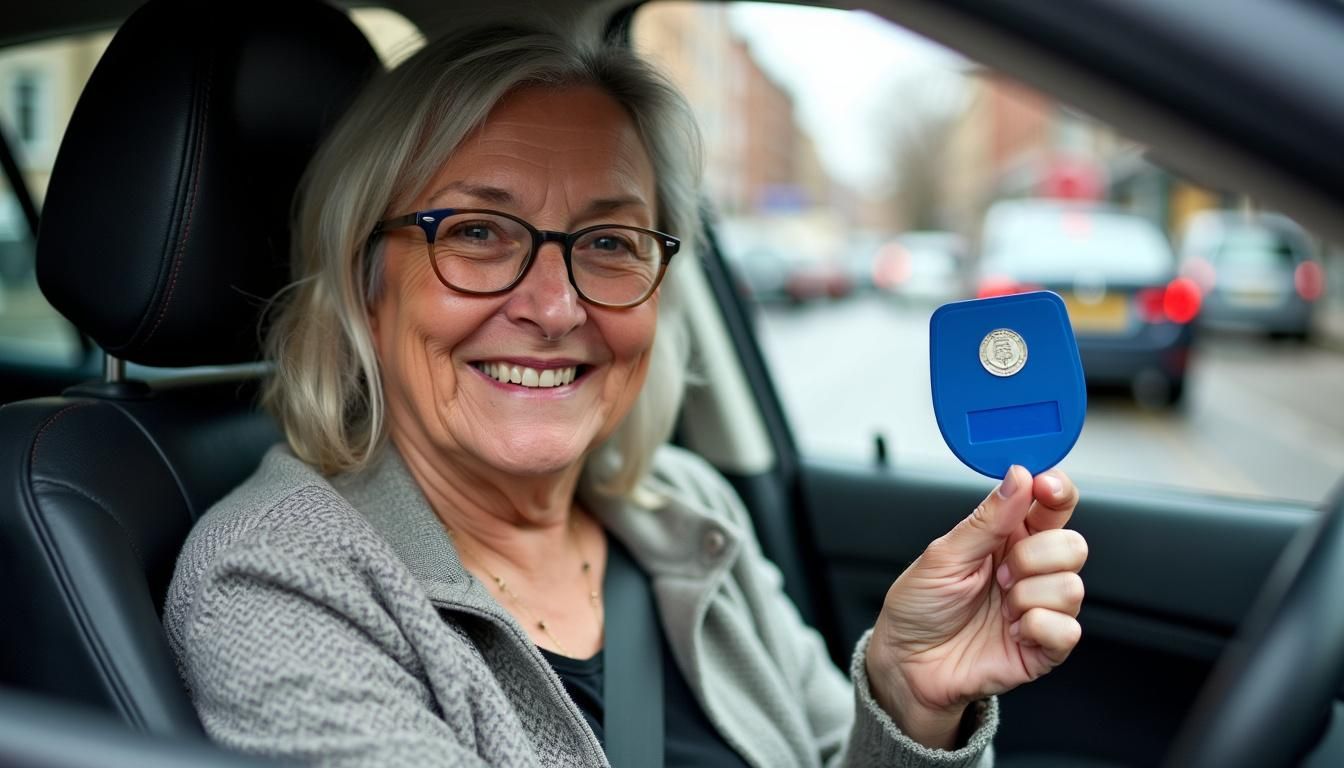Blue Badge for Hidden Disabilities: Eligibility Explained
Do you struggle with hidden disabilities? The Blue Badge scheme for hidden disabilities can help. It offers parking perks to those with non-visible conditions. This guide will explain who can get a Blue Badge and how to apply.
Read on to learn more about this helpful programme.
Eligibility Criteria for Hidden Disabilities

The Blue Badge scheme now covers hidden disabilities. This change helps people with less visible conditions. You may qualify if you have autism, mental health issues, or other non-physical problems.
The rules look at how your condition affects you, not just the diagnosis.
Definitions and examples of qualifying conditions
Hidden disabilities can make daily life hard. They include autism, mental health issues, and some brain disorders. These conditions may not be visible, but they can cause severe problems.
People with hidden disabilities often struggle to move around or plan trips.
Some examples of qualifying conditions are anxiety, depression, and PTSD. Others include chronic pain, epilepsy, and diabetes. To get a Blue Badge, you must show how your condition affects your mobility.
You need proof from a doctor or health expert. This could be a diagnosis letter or a care plan. The badge helps people with hidden disabilities access easier parking.
Application Process for a Blue Badge with Hidden Disabilities
Applying for a Blue Badge with hidden disabilities is now easier. You need to show proof of your condition. This can be a letter from your doctor or test results. You also need to fill out a form.
The form asks about how your disability affects you. You can apply online or by post. Want to know more about the process? Keep reading!
Required documentation and evidence
To get a Blue Badge, you need to show proof. This can be a letter from your doctor or a care plan. You may also need to share your personal independence payment details. Other useful items are your driving licence and passport.
These help prove who you are.
For hidden disabilities, more proof might be needed. This could be a report from a psychiatrist or nurse. You might also share notes from an occupational therapist. Your summary care records can be helpful too.
All these papers show how your condition affects your daily life.
How to Apply for a Blue Badge Online
Applying for a Blue Badge online is now easier than ever. You can get one if you have a disability or health problem that affects your mobility.
- Visit the official government website for Blue Badge applications.
- Click on “Start now” to begin your online application.
- Fill in your personal details, including your name and address.
- Provide your National Insurance number for identity checks.
- Upload a recent digital photo of yourself.
- Choose the reason for your application, such as hidden disability or mobility issues.
- Answer questions about your health condition or disability.
- Provide details of any benefits you receive, like Disability Living Allowance.
- Upload proof of your condition, such as a letter from your doctor or nurse.
- Pay the fee for your Blue Badge application.
- Submit your application and wait for a decision by mail.
- If approved, your Blue Badge will arrive at your home address.
Benefits of the Blue Badge for Individuals with Hidden Disabilities
Blue Badges offer big perks for people with hidden disabilities. These badges let you park closer to where you need to go. This helps if you have trouble walking far or need quick access to places.
You can use special parking spots that are near entrances. This makes trips easier and less stressful.
The badge also gives you more freedom. You don’t have to worry about some parking rules. In some areas, you can park for free or for longer times. This is great for doctor visits or shopping trips.
The badge helps you feel more at ease when you go out. It makes daily tasks simpler for those with hidden health issues.
Conclusion
Hidden disabilities now qualify for Blue Badges. This change helps many people get around easier. Getting a badge can make life better for those who struggle with travel. Apply online if you think you’re eligible.
Remember, the right support can open up new chances for everyone.
FAQs
1. Who can get a Blue Badge for hidden disabilities?
People with mental illness, autism, or other unseen health issues may qualify. Carers and nurses can also apply for patients who need help.
2. What proof do I need to show for a Blue Badge?
You must give proof of who you are. This can be a driving licence or pension card. You also need papers from health care experts about your condition.
3. How does a Blue Badge help with accessibility?
A Blue Badge gives easy access to parking. It helps people use wheelchair accessible spots. This is good for health and safety. It also helps avoid the congestion charge in some areas.
4. Can I use my Blue Badge in any vehicle?
Yes, you can use it in any car. But you must show your badge and make sure the car has proper insurance.
5. Do I need to see a doctor to get a Blue Badge?
You may need to see health care experts. They will check if you have issues that cause great distress. Social care workers can also help with your case.

